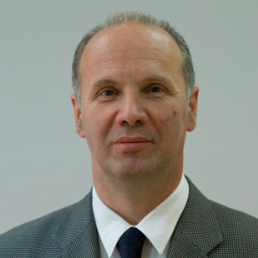RADLAB Seminar
Ten Positive Years of Electromagnetic Structures with Negative Elements
Add to Google Calendar

In the last ten years there have been many experimental attempts of enhancing functionality of RF artificial structures by embedding the active circuits that mimic behavior of hypothetical negative capacitors, negative inductors, and negative resistors. It is well known that negative capacitors and negative inductors have dispersion curves that are the exact inverse of the dispersion curves of ordinary "positive' elements. Therefore, the dispersion of ordinary passive RF networks used in metamaterials and metasurfaces can be compensated with the "inverse' dispersion of "negative' networks, resulting in an extremely broadband behavior. On the other hand, negative resistors can provide gain and, therefore, compensate for unavoidable losses of passive electromagnetic structures.
However, it is well known that all networks with "negative' elements suffer from inherent stability problems that prevent them from widespread use in practical applications. In the first part of this talk, several unconventional stable designs based on novel "all-negative networks' and "band-pass' non-Foster elements, will be discussed. In the second part, the unusual concept of "non-Foster source' that turns inherent instability into a very useful feature, will be presented. This approach leads to the design of broadly tunable (the bandwidth up to 10:1) and nearly perfectly-matched, self-oscillating antennas and antenna arrays.
The discussion of the above approaches will be supplemented with practical experimental examples in the lower RF band (1-100 MHz). Finally, possible extensions of the proposed concepts into microwave regime by the use of microelectronic technology, as well the increase of efficiency by introduction of switching non-Foster elements, will be highlighted.
Silvio Hrabar was born in Trogir, Croatia in 1962. He received Dipl. Ing. and M.S. degrees from University of Zagreb, Croatia and a Ph.D degree from Brunel University of West London, United Kingdom, all in electrical engineering. In the past, he was employed at various consulting, development, research and teaching positions both in industry and academia, in the fields of radio engineering, microwave electronics, antenna engineering, electromagnetic compatibility, electromagnetic metrology, computational electromagnetics and electrostatics. Currently, he is affiliated with University of Zagreb, Croatia, where he is a Professor of applied electromagnetics. His research interest includes applied electromagnetics, electromagnetic compatibility, antennas, microwave measurements and microwave engineering. He is author of one textbook, several book chapters, and many conference reports and journal papers. Professor Hrabar is the chair of the Metamaterial group at Faculty of Electrical Engineering and Computing (FER), University of Zagreb. In 2012 he received "Award for exceptional achievements in research and innovations' for "Contribution to the understanding of basic physics of electromagnetic metamaterials and development of their engineering
 MENU
MENU 
